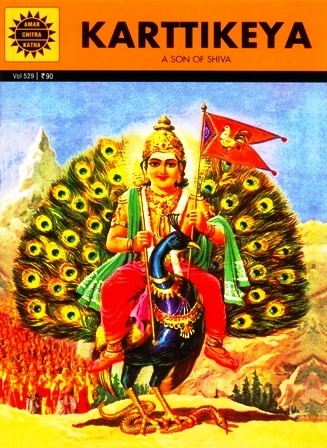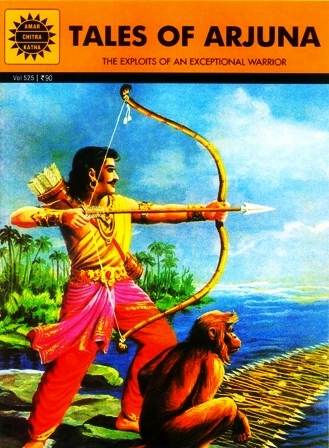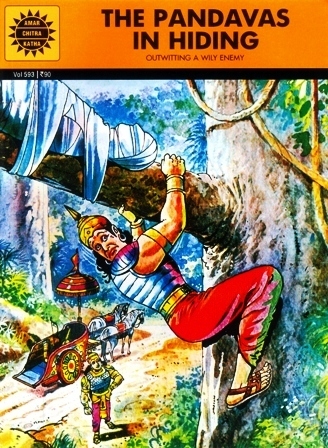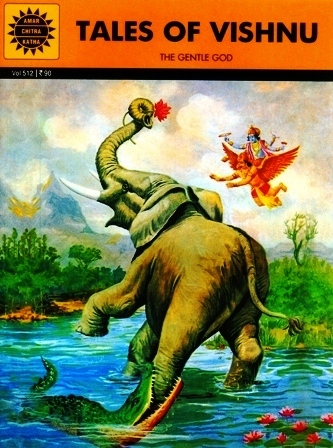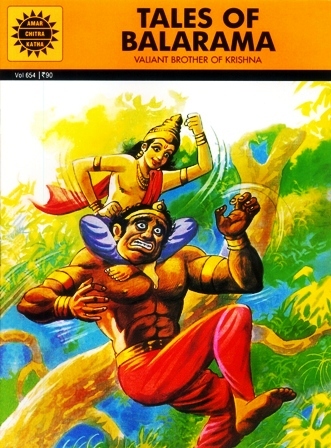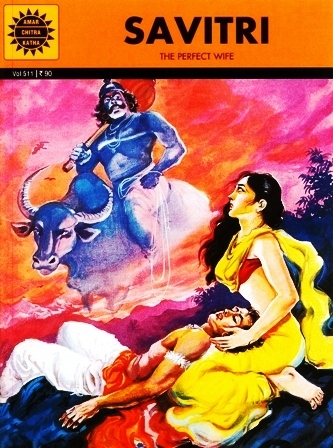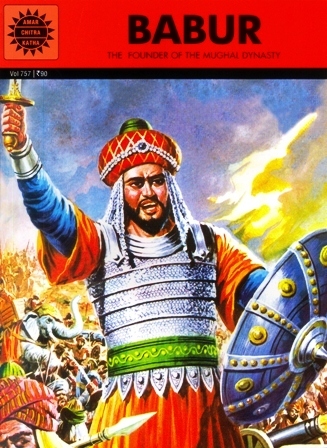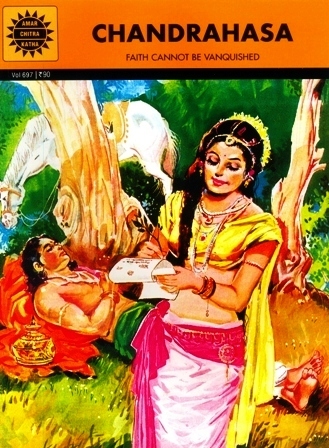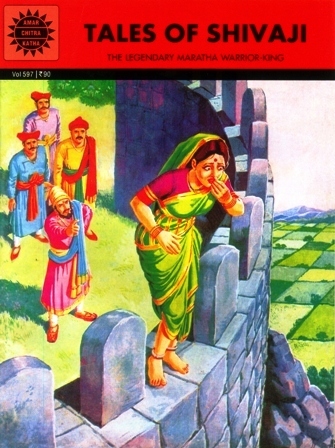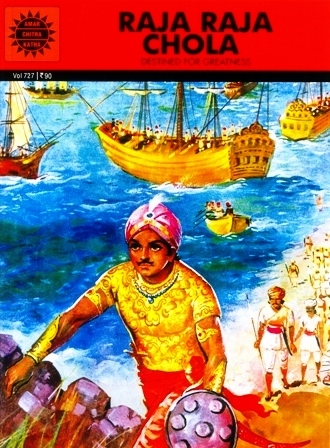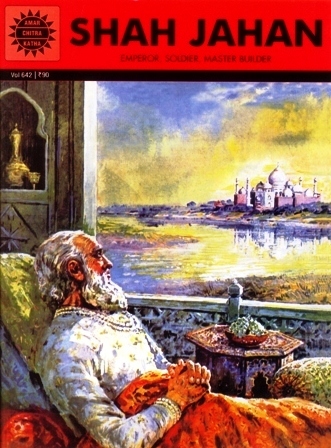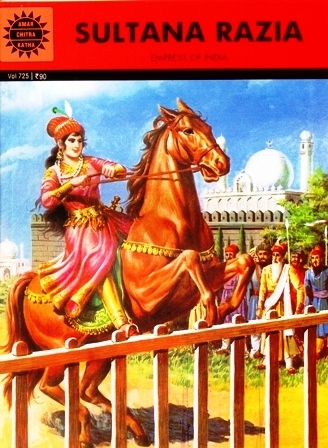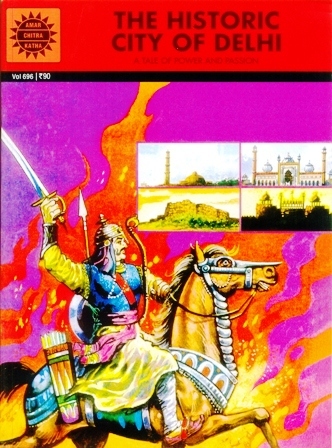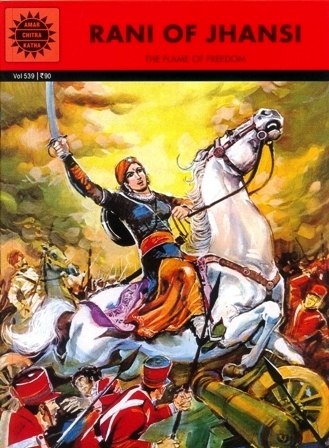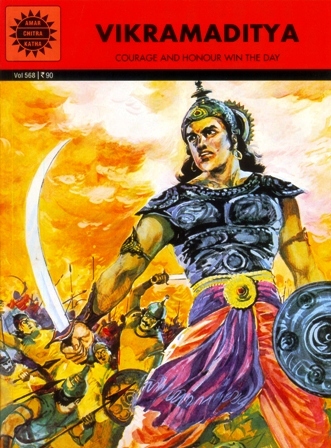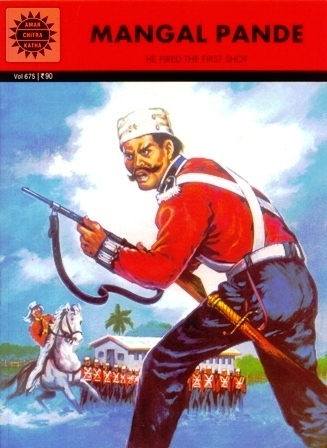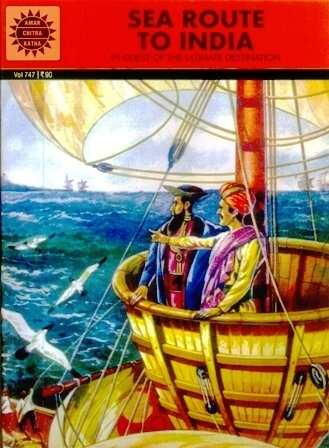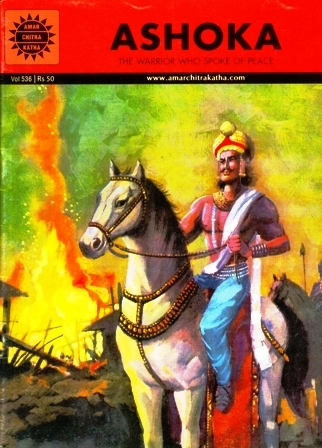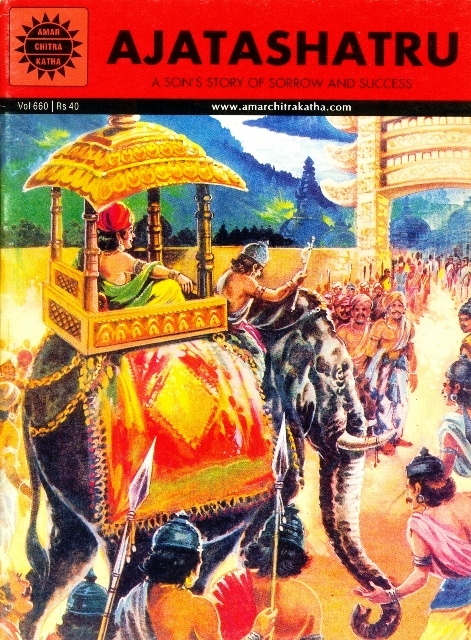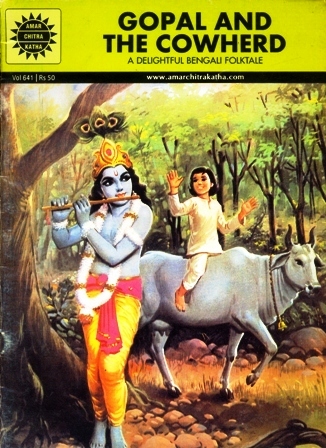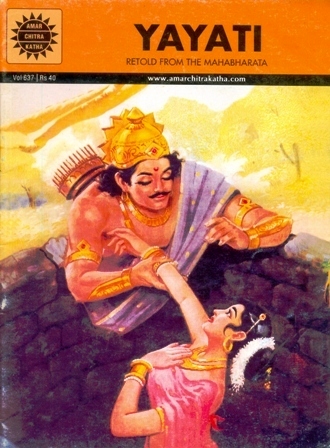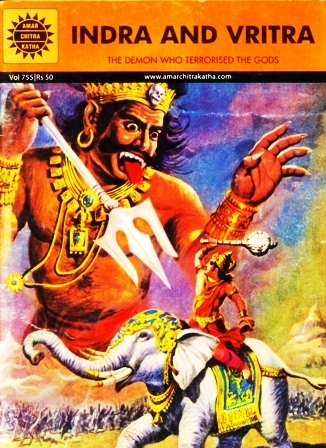-
Karttikeya.
The Puranas describe Karttikeya, a son of Shiva, as the commander-in-chief of the celestial army. He is also known as Subrahmanya, Skanda, Guha and Kumara. To the Tamil-speaking people he is Murugan. The six-headed, twelve-armed Karttikeya seated on a peacock is the symbol of youth, beauty, valour and supreme wisdom. This Amar Chitra Katha is based on the Tamil version of Skanda-Purana-Samhita.
-
Tales of Arjuna.
Superbly skilled, speedy and strong, Arjuna boasted that he was the world's greatest warrior. But, despite his unquestionable courage, this honorable Pandava prince realized he could not confront Lord Indra's power or even the wiles of a cheeky monkey, without help. He needed divine weapons, such as the Gandiva bow, with its inexhaustible supply of arrows and a special war chariot. Most importantly, he needed the blessings of the gods, especially Lord Vishnu.
-
The Pandavas in Hiding
King Virat’s honour was at stake and his son, Uttara, was anxious to show off his warrior skills. But faced by the enemy Kaurava hordes, Uttara’s courage vanished. It was up to his hero, the famous Pandava, Arjuna, to ensure that the young prince succeeded in his mission. And yet, Arjuna had to keep his own identity hidden, or the Kauravas would gain the upper hand.
-
Tales of Vishnu.
Vishnu, they say, is just one of a powerful threesome - the highest lords of the universe. However, though Brahma created the universe and Shiva can destroy it, it is up to the great god Vishnu to keep all creatures within well and happy. Always compassionate, he is also the wisest of the trio. It is he who good-naturedly sorts out the mess the others create and best of all, Vishnu always favors goodness and honesty.
-
Tales of Balarama
Balarama was not only Krishna's brother, he was his right-hand man. Together they made quite a team. Balarama's amazing strength and courage made dangerous demons like Dhenukasura and Pralamba look like weaklings. He even tamed the Yamuna river which had meandered away from Vrindavan and brought it back to the people who needed it.
-
Draupadi..
This dark beauty was no ordinary woman. Born from the pure flames of a sacred fire, Draupadi was devoted wife to the five famously talented and virtuous Pandava brothers. The evil Kauravas wanted her for themselves and eyed the Pandava kingdom as well. Raging at their impertinence and ranting at her husbands' helplessness, Draupadi inspired a deadly war which wiped out the Kaurava scourge for ever.
-
Savitri...
Even the merciless Lord Yama is charmed by Savitri. This gentle, beautiful princess is admired by gods and kings, the rich and the poor, the young and the old. But when the shadow of death hangs over her husband she is filled with courage spurred by her selfless love for him. She strives for a miracle, with amazing success!
-
Babur
Descended from the house of Timur and Genghis Khan, Zahir-ud-din Muhammad Babur founded the Mughal dynasty in India. Babur lived for most of his early life as an exile in and around his homeland in Central Asia. Declared ruler of Farghana at the age of 12, the young boy had to contend with treacherous uncles, tyrant neighbors and rebellious generals. But he dealt with all of them even while moving towards his historic tryst with India.
-
Chandrahasa..
The 'Jamini Bharata' is attributed to a disciple of Vyasa, Jaimini, who is also said to be the founder of the Purvamimamsa philosophy. The book is a treasure house of stories of the devotees of Lord Vishnu. Through each story the author seeks to prove that God does not forsake him who has implicit faith. The repeated attempts on the life of innocent Chandrahasa not only failed to materialize but also finally boomeranged on the villain himself because of Chandrahasa's implicit faith in the Lord.
-
Tales of Shivaji..
Shivaji, famous as a warrior and patriot, was also renowned for his kindness. His behavior managed to convert a spunky young mother, an avenging widow and a terrified maiden into devoted friends. Not only did the powerful Maratha display humility and a constant sense of fair play, he also upheld the honor of every woman whether rich or poor, enemy or ally.
-
Raja Raja Chola
Tarul Mozhi Varman was the younger son of the king of Thanjavur. Quiet, firm and dependable he won the heart of every person he met. However, it was his hot-headed brother who was heir to the throne. But no one could stand in the way of what destiny had in store for the young prince. By the strangest twists of fate, Arul ascended the throne as Raja Raja Chola and proved to be one of the greatest rulers in the history of medieval India. During his 30-year-reign the Chola empire not only became a formidable maritime power but was also a hub of art and architecture.
-
Sultana Razia
Intelligent, brave, competent and just, Razia was chosen by her father, Sultan Iltutmish, to succeed him to the throne of Delhi. The people loved her and trusted her but the Amirs or nobles found it difficult to swear loyalty to a woman. Sultana Razia ruled for only three and a half years but she proved her father right by being a wise and just ruler who protected and nurtured her subjects. She led her armies and was a brave soldier. Her only enemy were the times that did not accept a woman as a leader.
-
The Historic City of Delhi
Down its 1000 year-old recorded history, Delhi was razed and built several times. The city played host to many rulers like the Chauhans, the Slave kings, the Khiljis, the Tughluqs, the Mughals and the British. It suffered the brutalities of numerous invaders. Each ruler and each invader left his own special mark on the psyche of this great city. The historic city of Delhi presents a palette of colorful influences that truly reflects the composite culture of India.
-
Rani of Jhansi...
She ruled over a small kingdom, but dreamt of freedom for the whole country. In the great revolt of 1857, Lakshmibai, the Rani of Jhansi, matched wits and force with the best of British generals. The image of the brave Rani of Jhansi charging her steed through enemy lines, her sword raised for the next thrust, is forever imprinted in Indian hearts.
-
Vikramaditya
A jealous brother robbed him of his kingdom, his own courage won it back. Chandragupta Vikramaditya has a special place in history because he proved that the love of power is not all that is needed to create an empire. Also needed are the love of a wise woman and good, old-fashioned honor.
-
Mangal Pande
The Indian sepoys of the Native Infantry Regiment, in Barrackpore, were appalled when they heard that the catridges they bit into before loading their guns were going to be greased with cow and pig fat. It was an insult to their religious sentiments. The murmurings of dissent rose as the news spread but the Britsh were insentitive to the reasons behind it. And then Mangal Pandey, a sepoy from the Native Infantry, fired the shot that triggered off the First War of Indian Independence.
-
Sea Route To India
The spices of India can take credit for inspiring some of the greatest maritime expeditions in the world. In a bid to find the sea route to India, European explorers like Bartholomew Diaz, Christopher Columbus and Vasco da Gama braved uncharted seas, discovered new lands and earned fame and glory for themselves. But for India, the opening of the trade route was both a blessing and a curse.
-
Ashoka
A power-hungry warrior and a peace-loving wife - could they ever tread together on the path of non-violence? Ashoka waged war after ruthless war, yet by the time his children grew up, he proudly saw them off as Buddhist missionaries. Read of the charmed life of this famous king of Magadha, who not only built a prosperous kingdom but spread the message of universal love.
-
Ajatashatru
Ajatashatru is ridden with guilt. What does a king do when, in a moment of misguided ambition, he orders the death of his own father? Ajatashatru wages war on his neighbors with brilliant new machines, expands his realm to make it a powerful empire and founds the new capital city of Pataliputra (modern Patna). But try as he might, he cannot shed his feelings of remorse and sorrow, until Gautama Bauddha shows him the way.
-
Gopal And The Cowherd
This simple Bengali folktale, illustrating the power of faith, was passed down from teacher to disciple from Sri Ramakrishna to Swami Vivekananda and from him to Sister Nivedita, who recounted it in 'Cradle Tales of Hinduism'. Little Gopal is afraid to walk alone through the forest to school. His mother tells him, "Call out to your cowherd brother. He will come and protect you". When Gopal calls out, to his delight, a cowherd with dancing eyes appears and escorts him to school.
-
Yayati
King Yayati had stopped only to quench his thirst, but the forest well presented him with a beautiful bride! All he had to do now was treat her well, but womanly wiles worked their spell to destroy his happiness. It took a thousand years of indulgence to make him see the path to true contentment and it did not lie through worldly pleasures.
-
Indra And Vritra
Vritra, the invincible asura, was created by Sage Twashta to avenge the death of his son, Vishwarupa, who had been killed by Indra. There was no weapon in the arsenal of the gods that could stop Vritra as he went on a rampage. Indra and the gods appealed to Lord Vishnu for help. Vishnu told them that only a weapon made from the bones of Sage Dadhichi would kill Vritra. The battle between Vritra and Indra was first told in the Rigveda. The version used here is taken from the Bhagawat Purana.
-
Sudama
Sudama's gift was small and inexpensive, but Krishna found it priceless as it came with selfless love. Krishna, who had both wealth and fame at his command, received it with pure joy. Life had taken the two friends on different paths and Sudama was now painfully poor. Their affection overcame all differences, however. A simple meal became equal to a luxurious feast and magically turned a poor hut into a mansion of gold.

